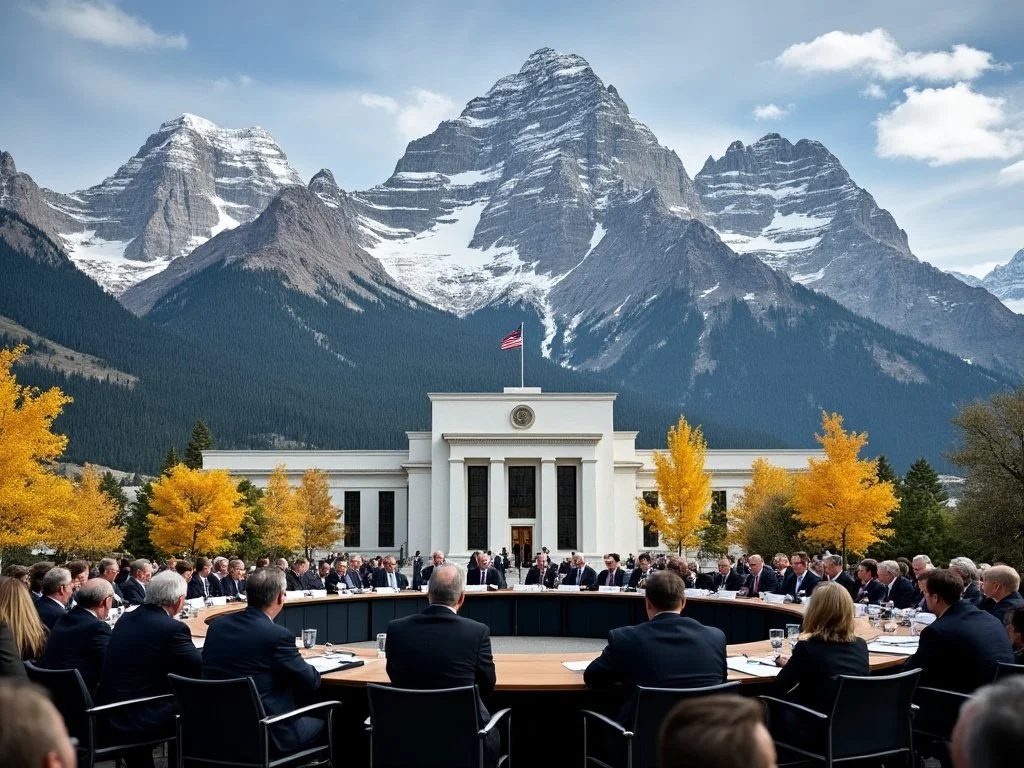High Stakes at Jackson Hole
The Jackson Hole Meeting: A Pivotal Moment for the Economy
In this week’s blog post, I delve into the critical importance of the upcoming Federal Reserve meeting in Jackson Hole, where discussions around a potential rate reduction are expected to take center stage. With inflation still stubbornly high and equity markets perched at unsustainable levels, the decisions made at this meeting could have far-reaching consequences for the economy. Understanding the potential outcomes is crucial for anyone invested in today's volatile market environment.
The Potential Pitfalls of Cutting Interest Rates Amid High Inflation and Overvalued Equities
In the current economic environment, where inflation is running rampant and equity prices are buoyed by cheap money, the Federal Reserve faces a critical decision: whether to cut interest rates or maintain their current stance. While a rate cut might seem like a quick fix to stimulate the economy, it could lead to several adverse consequences, particularly when inflation remains high and equity markets are artificially inflated. Here are the key risks that could emerge if the Fed decides to reduce rates under these conditions:
1. Worsening Inflationary Pressures
Cutting interest rates typically encourages borrowing and spending by making credit cheaper. While this can boost economic activity, it can also exacerbate inflation, especially if supply constraints are still in place. With more money chasing the same amount of goods and services, prices could surge even further, making it harder to bring inflation back down to manageable levels.
2. Fueling Asset Bubbles
Equity markets have already been driven to unsustainable levels due to an extended period of low-interest rates. Reducing rates again could inflate these bubbles even more, as investors continue to pour money into stocks, real estate, and other assets in search of higher returns. The larger these bubbles grow, the more catastrophic the eventual burst could be, leading to significant wealth destruction and market instability.
3. Erosion of Consumer Confidence
High inflation erodes purchasing power, and if consumers see the Fed cutting rates as a sign that inflation will not be tamed anytime soon, their confidence could be shaken. This lack of confidence can lead to reduced spending, which in turn could slow economic growth, counteracting the intended effects of the rate cut.
4. Encouraging Risky Financial Behavior
Lower interest rates might encourage both consumers and businesses to take on excessive debt, under the false assumption that rates will remain low indefinitely. This could lead to an increase in risky financial behavior, such as over-leveraging, which can become particularly dangerous if inflation forces the Fed to hike rates sharply in the future.
5. Weakening the Dollar and Spurring Capital Flight
A rate cut could weaken the U.S. dollar as investors seek higher yields elsewhere. This could lead to capital flight, where foreign and domestic investors move their money out of U.S. assets, further destabilizing financial markets. A weaker dollar might also increase the cost of imports, adding to inflationary pressures and hurting consumer spending.
6. Long-Term Damage to Credibility
The Federal Reserve’s credibility hinges on its ability to control inflation and ensure stable economic growth. Cutting rates when inflation is still high might signal to the market that the Fed is more concerned with short-term market performance than with long-term economic stability. This could undermine the institution’s credibility and make it harder to manage future economic crises.
7. Delaying Necessary Economic Adjustments
Finally, keeping rates artificially low can delay necessary economic adjustments, such as deleveraging and reducing excesses in the market. By cutting rates, the Fed might be postponing the inevitable correction, leading to a more severe downturn in the future.




